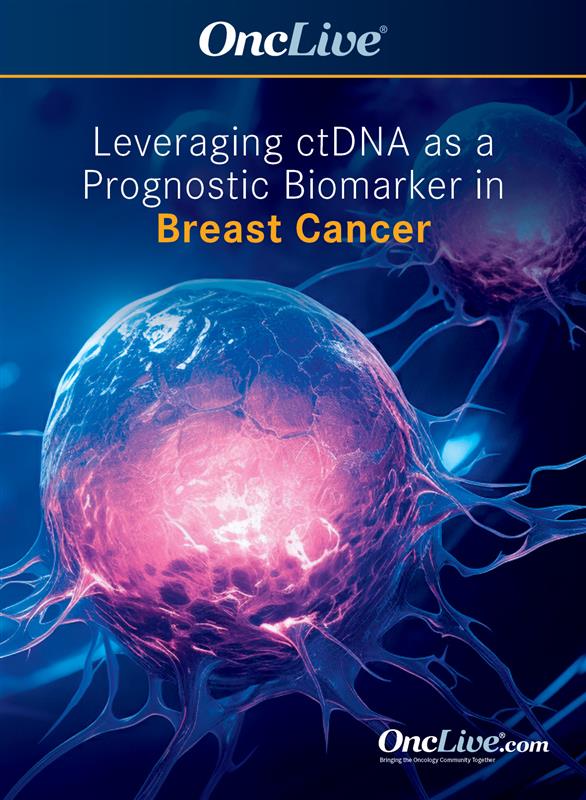Commentary
Video
Dr Pusztai on the Launch of the DARE Study in ER+/HER2– High-Risk Breast Cancer
Author(s):
Lajos Pusztai, MD, DPhil, discusses the phase 2 DARE trial evaluating circulating tumor DNA-guided second-line adjuvant therapy for patients with high-risk, stage II-III, estrogen receptor-positive, HER2-negative breast cancer, highlighting the importance of researching ctDNA utility in this patient population.
Lajos Pusztai, MD, DPhil, professor of medicine, Medical Oncology, co-leader, Genetics, Genomics and Epigenetics, Yale Cancer Center, discusses the phase 2 DARE trial (NCT04567420) evaluating circulating tumor DNA (ctDNA)-guided second-line adjuvant therapy for patients with high-risk, stage II-III, estrogen receptor (ER)-positive, HER2-negative breast cancer, highlighting the importance of researching ctDNA utility in this patient population.
At the 2023 San Antonio Breast Cancer Symposium, investigators presented data on the use of ctDNA detection as an indicator of disease relapse. Pusztai begins by noting that the DARE study utilizing ctDNA monitoring is likely the most extensive trial of its kind. During the screening phase of the DARE trial, 542 patients were enrolled, with over 1120 ctDNA assays conducted. The median surveillance period was approximately 2 years. Out of these assays, 37 showed ctDNA-positive results, indicating a 3.3% assay positivity rate and an 8.9% positivity rate at the patient level, Pusztai explains, adding that these outcomes aligned with expectations given the rarity of recurrences and the high sensitivity and specificity of the assays.
The ctDNA assays work by identifying relapses before clinical manifestation, Pusztai expands. Of the 37 patients with ctDNA positivity, 47% had more than 4 positive nodes, and 47% exhibited grade 3 disease or higher. Additionally, 31% of patients had T3 disease or larger and 10 patients had metastatic disease (27%), while the rest did not. Notably, earlier ctDNA studies used archived blood without concurrent imaging to show ctDNA positivity, but this trial revealed that a majority of patients in who tested ctDNA positive were imaging negative, indicating a state of minimal residual disease or molecular relapse, Pusztai emphasizes.
This research is important because of its potential implications on clinical practice, he continues. Pusztai explains that if results from the trial show that implementing this tool early and using it to guide therapy only introduces additional inconvenience and cost without enhancing recurrence-free survival, the tool may be valuable but lack meaningful clinical relevance. Conversely, a positive study outcome, ideally confirmed by independent trials, could be beneficial to the treatment paradigm, he adds. Successfully avoiding subsequent recurrence by introducing a second-line adjuvant treatment, potentially with modern endocrine regimens, would reshape treatment approaches, Pusztai states.
The DARE trial serves as an exploratory step, signaling the need for a large, definitive randomized trial with registrational intent in the future. These initial studies represent a foundational phase in uncovering the clinical utility of ctDNA monitoring, Pusztai concludes.









